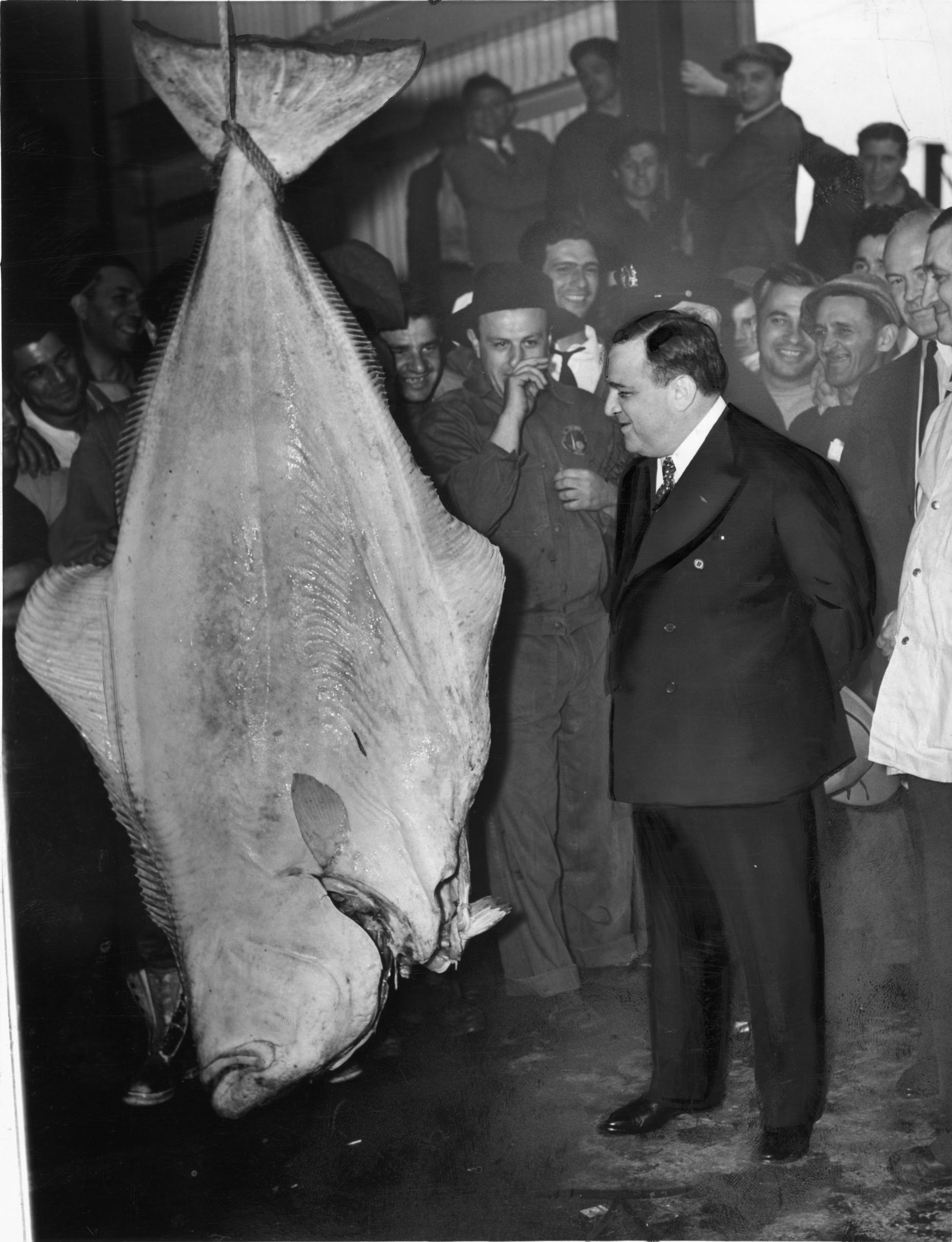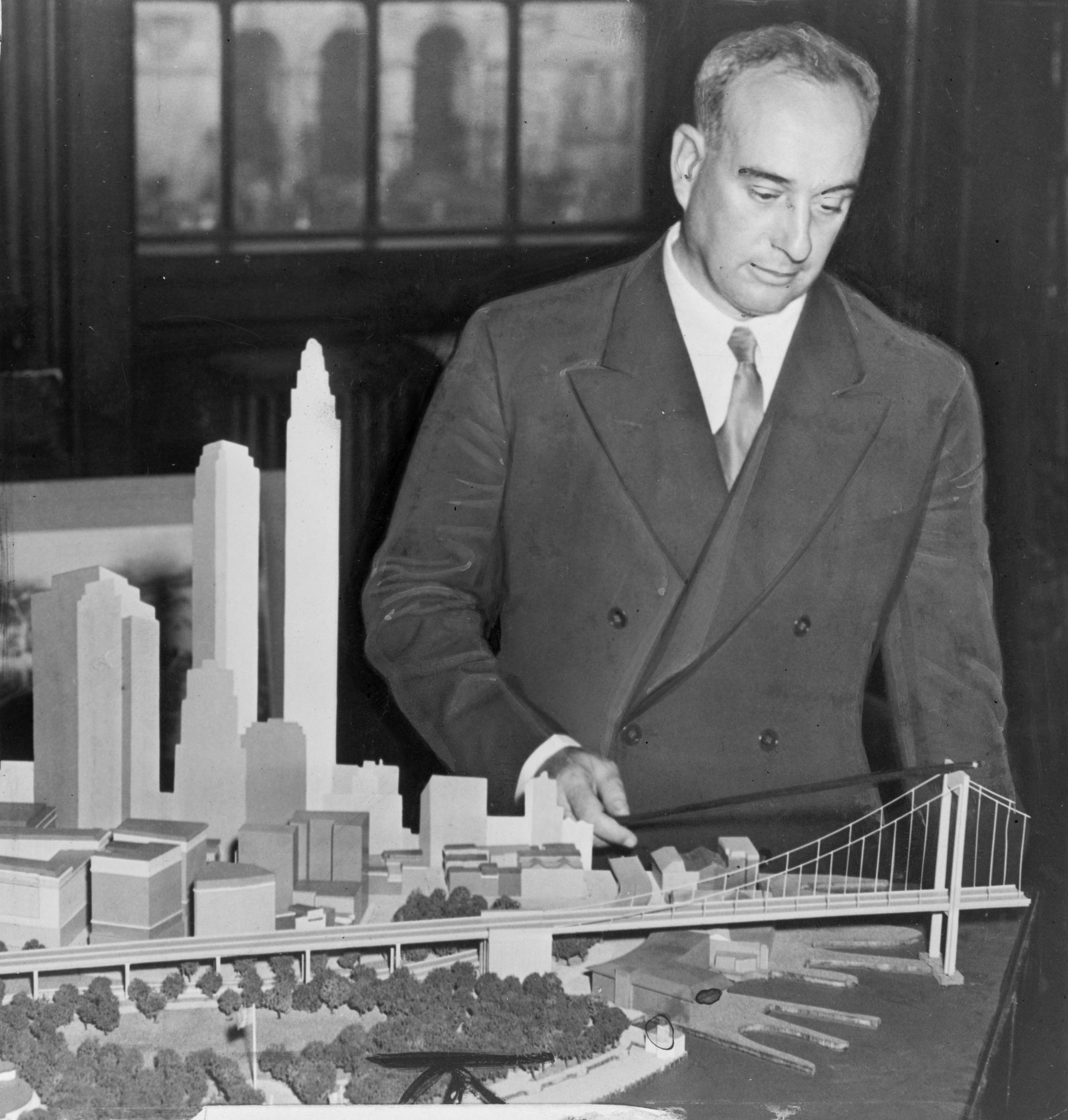C.M Stieglitz of the long-defunct World Telegram took this classic 1939 photograph of New York’s Mayor Fiorello LaGuardia with a 300-pound halibut. LaGuardia, a commanding presence to say the least, was famous for everything from being one of Hitler’s earliest and most outspoken critics to reading comic strips to local children on the radio. He was also known to not be allergic to cameras. LaGuardia passed away from pancreatic cancer eight years after this photo was snapped. An exceprt from his New York Times obituary:
“A city of which he was as much a part as any of its public buildings awoke to find the little firebrand dead. Its people had laughed with him and at him, they had been entertained by his antics and they had been sobered by his warnings, and they found it difficult to believe that the voice he had raised in their behalf in the legislative halls of city and nation, on street corners and over the radio, was stilled forever.
Mayor O’Dwyer, his successor, expressed this feeling. Although Mr. La Guardia’s death was expected, the Mayor said, his passing brought with it ‘a shock of awful finality.’
‘In his death the people of the city, the State and nation have lost a great, patriotic American citizen,’ the Mayor said.”
••••••••••


